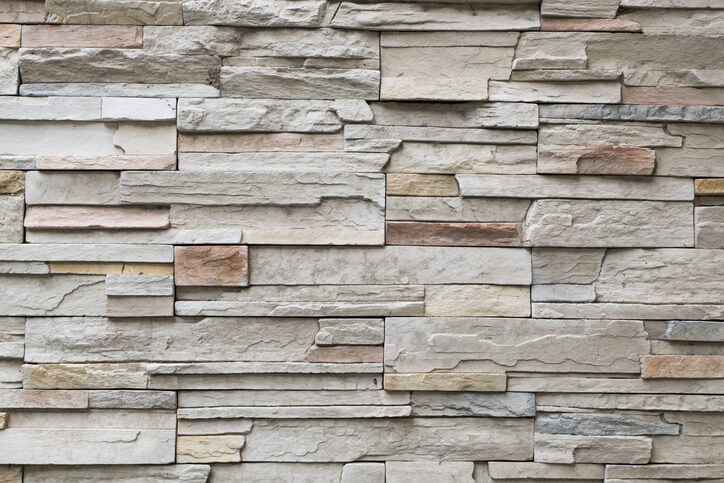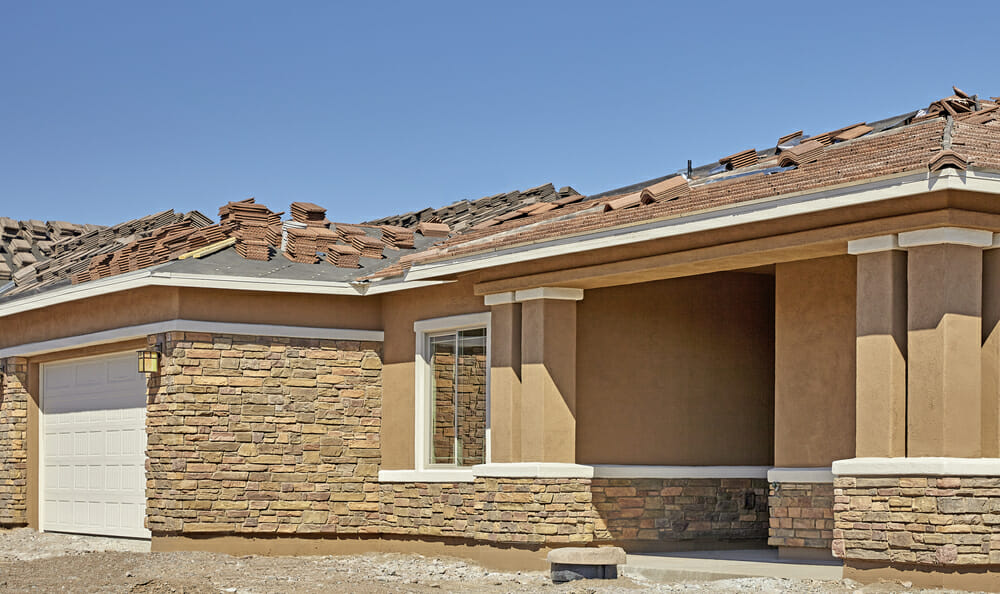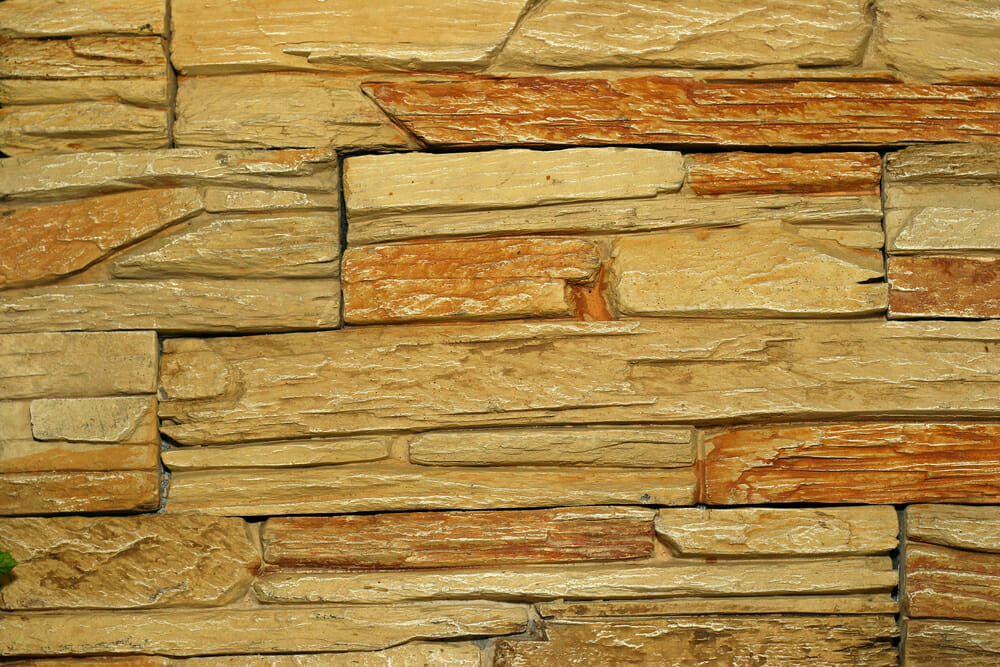Are you doing a siding project?
Modernize can pair you with three to four pros in your area, so you can compare options and save time and money.
Calling all you weekend warriors! If your concrete foundation could use some oomph, a faux stone skirting installed against it can net you instant curbside appeal—while being seriously simple to install.
Panel designs, textures, and colors have all come a long way in the last few years. The quality stone veneers on the market now look realistic enough to fool even the most scrutinizing neighbors. With a variety of styles to choose from, you can easily capture the rustic appeal of southwestern sandstone, the imposing presence of a stately brick bungalow, or even the quaint river rock exteriors of an ancient English chalet—all without spending a fortune on quarried stone, or hours toiling with scratch coats and heavy rocks.
Let’s run through the ins and outs of stone veneer installation, including the best ways to incorporate panels with your existing design scheme.

What Makes Stone Panels Different from Real Stone?
As we hinted at before, natural stone is expensive, labor-intensive, and costly to install. Stones weigh a lot, and they have to be attached to surfaces using a scratch coat—a coating of mortar and metal lath that’s applied to the wall first, before laying the stones. Additionally, since stones generally come in irregular shapes and sizes, they often have to be cut, broken, or fit together by hand, and that can drag out a project.
Stone veneers and stone paneling offer an affordable alternative to natural stone. Instead of being laid one by one, they’re mass-produced and molded into sheets made of cement or polyurethane. That makes them lighter and cheaper than hand-built stone facades. Additionally, cement adheres more readily to your concrete foundation, so generally, all you need is a layer of mortar applied behind the panels to get them attached.
Of course, nothing is ever as simple as it seems. Cementitious products may cost less, but they just don’t compare to stone when it comes to managing stormwater runoff. In fact, cement draws moisture, which can eventually cause problems with mold and rotting down the line. In fact, if you live in an area with colder temperatures, the faux stone products may frequently freeze and thaw, and you may wind up with broken or cracked panels, if you’re not careful. To avoid this issue, opt instead for natural thin stone veneers—a product made with thin slices of quarried stone. It mimics the behavior of manmade panels, without the moisture problems.
How to Install Stone Veneers
Installing stone veneers is a straightforward process that can significantly enhance your home’s exterior. Start by preparing the foundation: use a pressure washer to clean off any residue from the cement and trim back any weeds or shrubs that may be in the way. Let the foundation dry completely, or use a leaf blower for a quicker method.
Once dry, apply a concrete bonding agent with a paintbrush and allow it to become tacky to the touch. Prepare your mortar by mixing three parts masonry sand with one part masonry cement in a wheelbarrow. In a separate bucket, mix the acrylic polymer with water according to the instructions and combine it with the mortar mixture in the wheelbarrow, mixing thoroughly.
Find the Right Contractor for Your Siding Project
Whether you’re ready to begin your project now or need some expert advice, our network of contractors are here to help. With a few simple questions, we’ll find the best local professionals for you
Spread the mortar onto the foundation using a masonry trowel at a half-inch depth, smoothing the surface and raking lines into it. Apply a half-inch thick layer of mortar to the back of each stone panel, press it onto the wall, and tap it gently with a rubber mallet to secure it in place. Repeat this process until the entire area is covered with stone panels.

Which Kind of Stone Is Right for My Home?
Choosing the right stone to complement your siding requires careful thought about your home’s overall aesthetic. You want a look that integrates well with your property’s exterior. Before buying, purchase a few different samples. This will help you see which option works best with your siding.
Create Contrast with Color: Avoid choosing stone accents that are too matchy-matchy. Look for colors that complement your siding rather than blend in. If your exterior is a soft golden yellow, skip purplish stones. Instead, choose stones with blue, gray, or white undertones. Also, avoid clashing color combinations to maintain a cohesive look.
Integrate with Your Home’s Style and Time Period: The stone you choose should match your home’s style and time period. The variegated stacked stone works well with modern homes featuring angular lines. A mosaic pattern fits a 1930s-style brick bungalow perfectly. Sandstone would not suit a Victorian rambler. Take the time to find a stone that complements your home’s design.
Weigh Your Siding’s Existing Pattern: Stone can be bold or subtle, so choose one that enhances your current siding. If you have muted wood cladding, go for multicolored stone with large, irregular shapes. This adds visual interest. If your home features bold colors or textured brick, choose a minimalist stone to balance the design.
Factor in the Color of Your Roof and Shutters: Ensure that all exterior elements work together for a unified look. Your roof, shutters, and other features should coordinate with your stone choice. A mismatch can make the overall appearance feel off. Choose a stone that complements the color of these features.
Stone paneling is a simple and cost-effective way to enhance your home’s foundation. This weekend project can boost your home’s curb appeal and transform its exterior.
Find the Right Contractor for Your Siding Project
Whether you’re ready to begin your project now or need some expert advice, our network of contractors are here to help. With a few simple questions, we’ll find the best local professionals for you
Reviews from Real Homeowners
Welcome to Homeowner Resources! We are the Modernize blog. Modernize pairs more than 3 million homeowners a year with pre-vetted contractors in their area. This blog started because we believe homeowners should know everything about their homes, from how their HVAC works to which front door colors they might love. On Homeowner Resources, you can find information on every part of your home, right down to how you can negotiate with contractors to get the best price. Here's more about the blog.
Need a contractor? Learn more about how Modernize finds the right pro for you.



